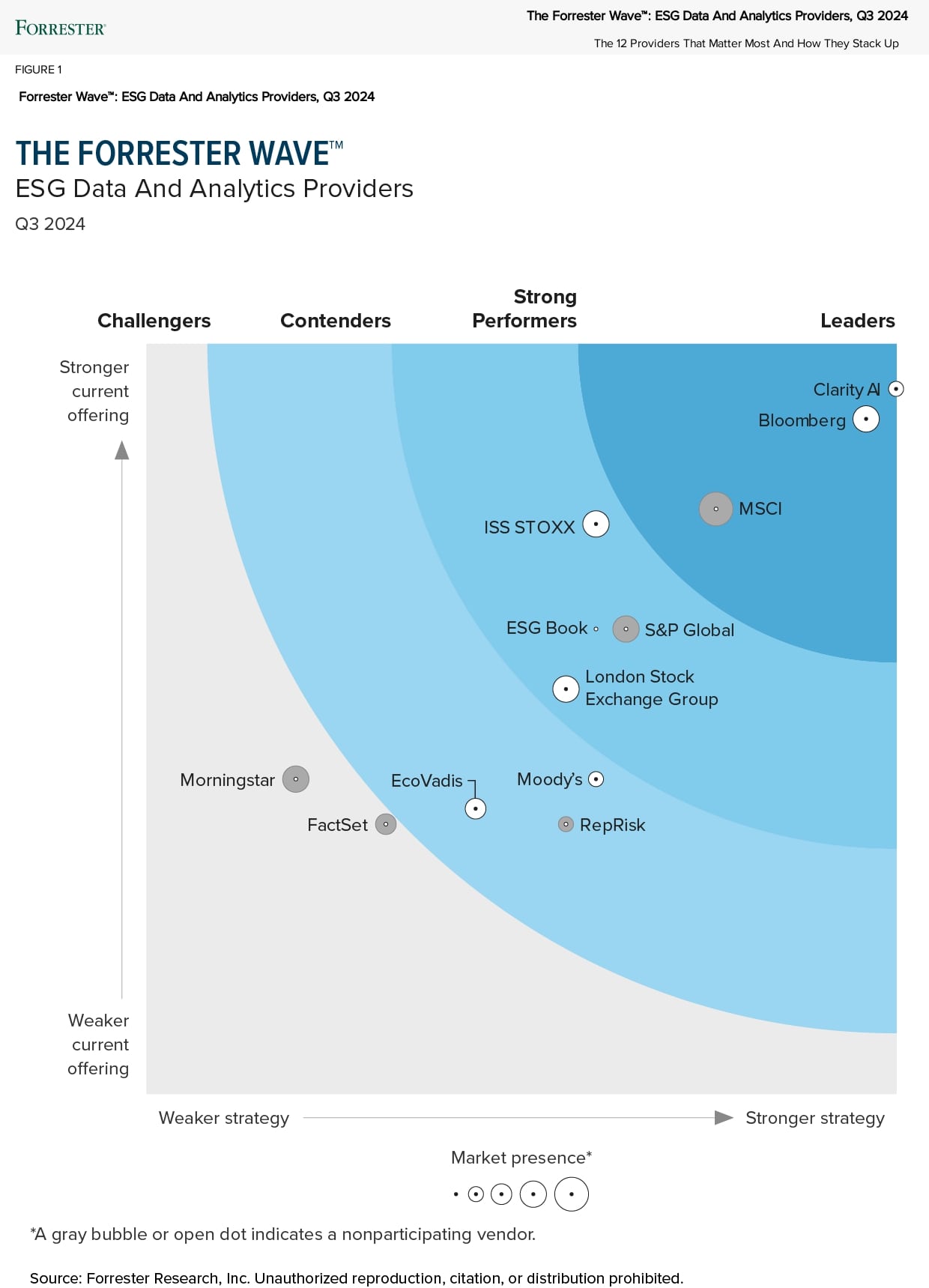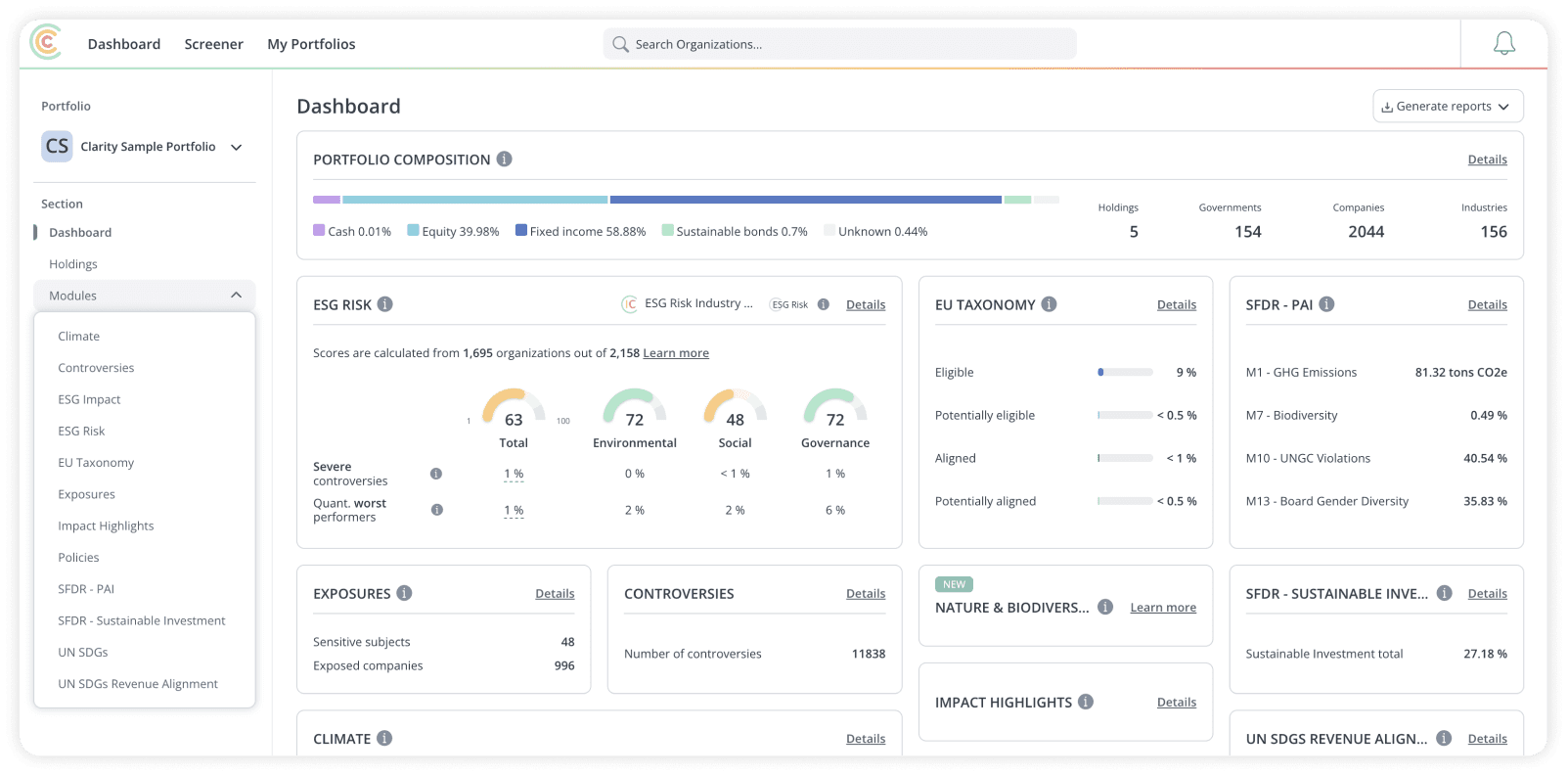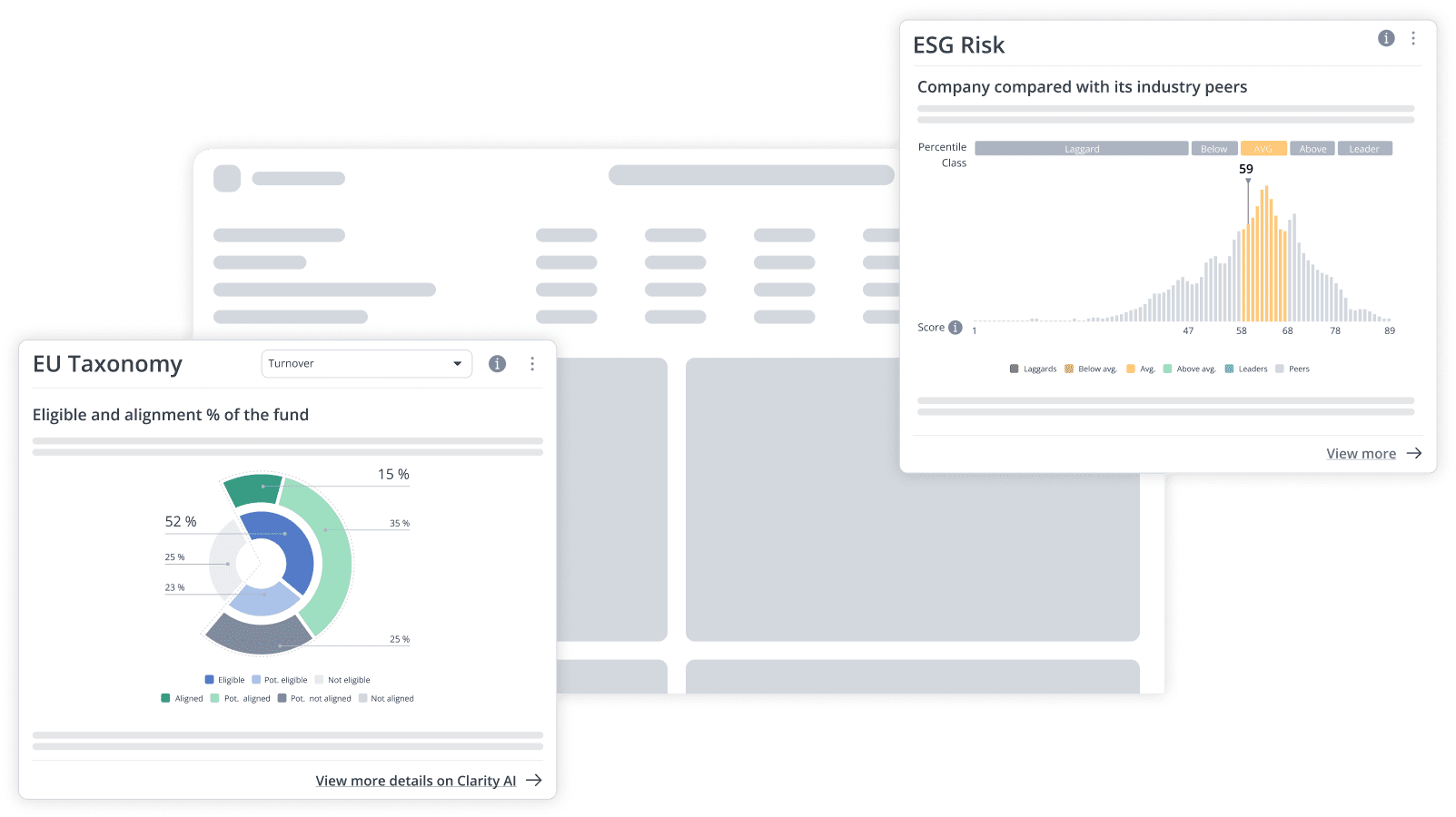The European Supervisory Authority further clarifies SFDR and Taxonomy regulation – but key questions still remain
The ESA releases “Questions and answers (Q&A) on the SFDR Delegated Regulation”
The European Supervisory Authority (ESAs) released their response to the European Commission’s questions on SFDR. The questions and answers (Q&A) on the SFDR Delegated Regulation are relevant for any investor who wants to remain at the front of the curve for regulatory solutions.
The wide ranging document covers a broad set of issues under the EU Taxonomy and SFDR, including interpreting Article 2(17) definition of sustainable investment and providing guidance on making Principle Adverse Impact (PAI) calculations. A couple of highlighted issues:
- The document offers further clarity on how to interpret “do no significant harm” separately in the context of EU Taxonomy and SFDR Article 2(17) sustainable investment definition;
- On Article 2(17), the ESAs confirm that market participants can choose their own definition of how to interpret the Article (in particular, measuring “contribution” to an environmental or social objective) as long as it follows the letter of the regulation and is applied consistently across the market participant’s product range;
- How to treat estimated versus reported data for PAI calculations, and the use of equivalent data for EU Taxonomy;
- Important detail on how to implement quarterly snapshots for annual PAI reporting;
- Further info on filling out the level 2 pre contractual and ongoing disclosure templates for Article 8 and 9, which apply from January 2023.
Clarity AI’s regulatory product offering covering EU Taxonomy and SFDR (both PAIs, Article 2(17) and specifically all Annex templates) is being updated to remain completely up to date with the latest advice from the ESAs. Leveraging our proprietary AI-powered technology, we can scale any regulatory changes and clarifications faster than other players and deliver them to our clients directly in their current workflow. Contact us for a complimentary trial of these solutions.





